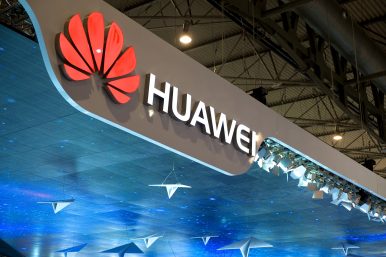By Robert Farley
 Intellectual property violations form the basis of the U.S. complaints against Huawei. The United States has, with some considerable justification, argued that Huawei has systematically attacked the trade secrets of its partners, and that it created a substructure that facilitates the wider theft of protected Western technology. Moreover, Huawei stands accused of repeatedly infringing on patented technology. In consequence, the United States has undertaken public and widely discussed steps to cut Huawei out of global technology markets.
Intellectual property violations form the basis of the U.S. complaints against Huawei. The United States has, with some considerable justification, argued that Huawei has systematically attacked the trade secrets of its partners, and that it created a substructure that facilitates the wider theft of protected Western technology. Moreover, Huawei stands accused of repeatedly infringing on patented technology. In consequence, the United States has undertaken public and widely discussed steps to cut Huawei out of global technology markets.
The steps have dire implications for Huawei, and immense implications for broader U.S. policy in the technology sector. Due to the complexity of the international technology supply chain, it will be exceedingly difficult for Huawei to source components completely from non-U.S. producers. Most non-U.S. producers themselves have considerable connections with U.S. technology firms. Moreover, the United States can lean on foreign technology firms (most of which have significant ties with the U.S. tech sector) to shy away from working with Huawei. In short, Huawei may soon lack the ability to acquire chips from the United States, and from any companies that work with the United States.
More broadly, the attack launched by the United States falls into the concept of “weaponized interdependence,”a term recently coined by Henry Farrell and Abraham Newman. Farrell and Newman argue that international commerce (among other phenomena) creates a complex and asymmetric map in which certain players can leverage their central positions in order to coerce others. Farrell and Newman illustrated the argument with an application to the global financial system, in which interdependence has allowed the United States to aggressively target countries and firms that have violated sanctions against Russia and Iran. While seeming obvious, the argument runs contrary to decades of thinking about the “flattening” nature of international commercial networks.
We can think of the global system of patent and trade secret protection as a similar kind of interdependent network, with its own evident vulnerabilities and opportunities for leveraging lethality. The United States has been at the forefront of an effort to increase intellectual property protection for at least the last two decades. Since the 1990s, the United States has facilitated the establishment of a global IP protection architecture, and ensconced that architecture in multilateral and bilateral treaty law. The impetus for strengthening international IP protection came largely from private actors, and while U.S. trade negotiators adopted their views from the 2000s on, the idea that such systems could be weaponized was not clearly evident.
But now, this effort now appears to have given the United States tools for breaching the core functions of critical foreign firms. The interconnected nature of the global tech sector gave Huawei access to an array of technologies that it would not otherwise have been able to take advantage of. The legal foundation for that interconnection (a system of mutually-supporting patent law and trade secret protection that enabled sharing) has now giving the United States the knife it’s using to kill Huawei. My next column explores how using that knife might be dangerous for the United States, as well as for China.
No comments:
Post a Comment